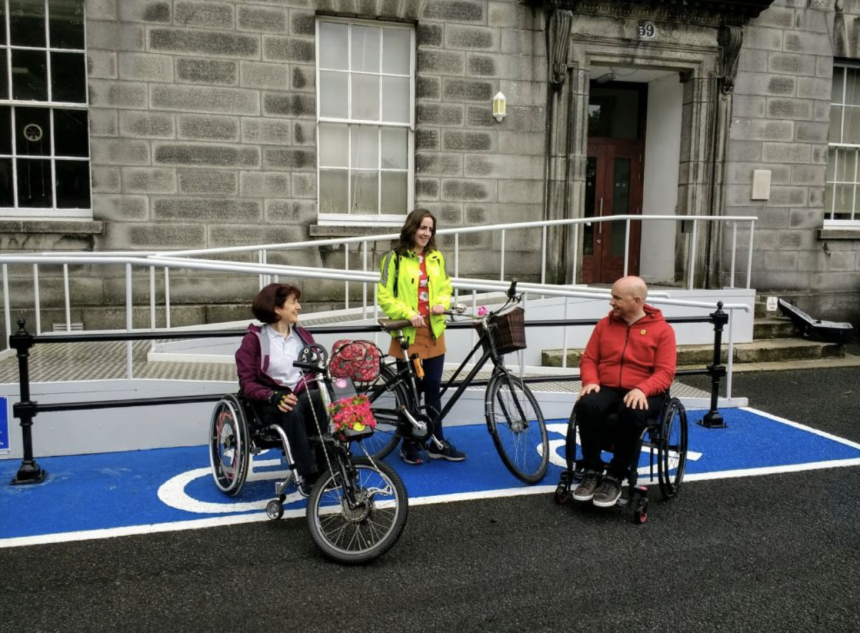The history of disability equipment in the UK is a rich tapestry woven with threads of innovation, advocacy, and resilience. From humble beginnings to modern advancements, the evolution of disability aids reflects societal attitudes towards disability and the continuous quest for inclusivity and accessibility.
Early Beginnings:
The roots of disability equipment in the UK stretch far back into history, where simple aids provided crucial support to individuals with disabilities. During ancient times, basic tools such as wooden crutches and walking sticks were utilised to aid mobility. These aids, although rudimentary, played a vital role in enabling individuals with mobility impairments to navigate their surroundings with greater ease.
As society progressed, so too did the development of disability equipment. Throughout the Middle Ages, craftsmen crafted prosthetic limbs for amputees, albeit with limited functionality. These early prosthetics were often custom-made and tailored to the specific needs of the individual, underscoring the importance of personalised care and innovation in addressing disability.
Industrial Revolution and Technological Advances:
The Industrial Revolution marked a significant turning point in the history of disability equipment, ushering in an era of technological innovation and mass production. With the advent of steam-powered machinery, the manufacturing process became more efficient, leading to the widespread availability of prosthetics and orthotics.
During the 19th century, advancements in materials and techniques further enhanced the quality and functionality of disability aids. Innovations such as adjustable prosthetic limbs and mechanical braces provided individuals with greater mobility and independence.
Moreover, the development of Braille in the early 19th century revolutionised communication for individuals with visual impairments, opening up new avenues for education and information access.
The Rise of Advocacy and Accessibility:
The 20th century witnessed the rise of disability rights movements and advocacy organisations dedicated to promoting inclusivity and accessibility. Following World War II, the UK government introduced the Disabled Persons (Employment) Act 1944, which aimed to improve employment opportunities and vocational training for disabled individuals.
Throughout the decades that followed, organisations such as the Royal National Institute of Blind People (RNIB) and Scope (formerly known as The Spastics Society) played a crucial role in raising awareness about disability issues and advocating for the rights of disabled individuals. These organisations worked tirelessly to challenge stigma, improve accessibility, and foster a more inclusive society for all.
Technological Innovation in the Modern Era:
The advent of the digital age has brought about a new wave of technological innovation in the field of disability equipment. From powered wheelchairs equipped with advanced mobility features to assistive devices integrated with artificial intelligence, the range of available aids has expanded exponentially, empowering individuals with disabilities to lead more independent and fulfilling lives.
One notable advancement in recent years has been the development of wearable technology designed specifically for individuals with disabilities. Devices such as smart glasses and hearing aids equipped with Bluetooth connectivity have revolutionised communication and accessibility, enabling users to interact with their surroundings in ways that were once unimaginable.
Challenges and Opportunities Ahead:
While significant progress has been made in the field of disability equipment in the UK, challenges remain in ensuring equitable access and inclusion for all. Issues such as affordability, availability, and stigma continue to pose barriers to full participation in society for disabled individuals.
Moreover, the COVID-19 pandemic has exacerbated existing disparities and highlighted the urgent need for systemic change. As society grapples with the ongoing effects of the pandemic, it is imperative that we prioritise the needs of disabled individuals and work towards creating a more inclusive and accessible future for all.
In recent decades, the landscape of disability equipment in the UK has witnessed significant advancements driven by technological innovation, legislative reforms, and shifting societal attitudes. Let’s delve deeper into some of the key developments that have shaped the modern era of disability aids:
Digital Revolution and Assistive Technology:
The emergence of the digital age has revolutionised the landscape of disability equipment, paving the way for a plethora of assistive technologies aimed at enhancing accessibility and independence for individuals with disabilities.
From screen readers and speech recognition software to voice-activated devices and smart home automation, technology has empowered disabled individuals to navigate the world with greater ease and autonomy. For example, smartphone apps like Be My Eyes connect visually impaired users with sighted volunteers who assist them in real-time through video calls, illustrating the transformative potential of technology in fostering inclusivity.
Universal Design and Inclusive Practices:
The principles of universal design have gained traction in recent years, advocating for the creation of products, environments, and services that are accessible to people of all abilities. Designing with inclusivity in mind not only benefits individuals with disabilities but also enhances usability for everyone.
In the UK, initiatives such as the Accessible Britain Challenge and the Disability Discrimination Act have played a pivotal role in promoting universal design and raising awareness about the importance of accessibility in public spaces, transportation, and infrastructure.
Personalisation and Customisation:
With advancements in manufacturing techniques and materials, disability equipment has become increasingly customisable to meet the unique needs and preferences of individuals.
Whether it’s bespoke prosthetic limbs tailored to match skin tone and body shape or adjustable mobility aids designed to accommodate varying levels of mobility, personalised solutions empower disabled individuals to reclaim agency over their bodies and identities.
Moreover, the rise of 3D printing technology has democratised the production process, enabling cost-effective and rapid prototyping of custom-made prosthetics and orthotics.
Collaboration and Co-Design:
Collaboration between disabled individuals, designers, engineers, and healthcare professionals has emerged as a driving force behind innovation in disability equipment. Through co-design initiatives and user-centred approaches, stakeholders work together to identify needs, address challenges, and develop solutions that prioritise user experience and usability.
Co-design not only ensures that disability aids are functional and practical but also fosters a sense of ownership and empowerment among users, who play an active role in shaping the design process.
Policy Reform and Advocacy Efforts:
Legislative reforms and advocacy campaigns have played a pivotal role in driving systemic change and promoting the rights of disabled individuals in the UK. The Equality Act 2010, for instance, prohibits discrimination on the grounds of disability and imposes a duty on service providers to make reasonable adjustments to accommodate the needs of disabled customers.
Similarly, campaigns such as the #PurpleLightUp movement, which celebrates the contributions of disabled employees in the workforce, have helped raise awareness about the value of inclusion and diversity in the workplace.
In conclusion, the history of disability equipment in the UK is a testament to the resilience, innovation, and collaboration of individuals and communities striving to create a more inclusive and accessible society. From ancient aids to cutting-edge technologies, the evolution of disability aids reflects the ongoing journey towards equality and empowerment for individuals with disabilities.
As we continue to navigate the challenges and opportunities ahead, let us remain committed to championing inclusivity, celebrating diversity, and building a future where all individuals, regardless of ability, can thrive and contribute to their fullest potential.
Lynn Martelli is an editor at Readability. She received her MFA in Creative Writing from Antioch University and has worked as an editor for over 10 years. Lynn has edited a wide variety of books, including fiction, non-fiction, memoirs, and more. In her free time, Lynn enjoys reading, writing, and spending time with her family and friends.















